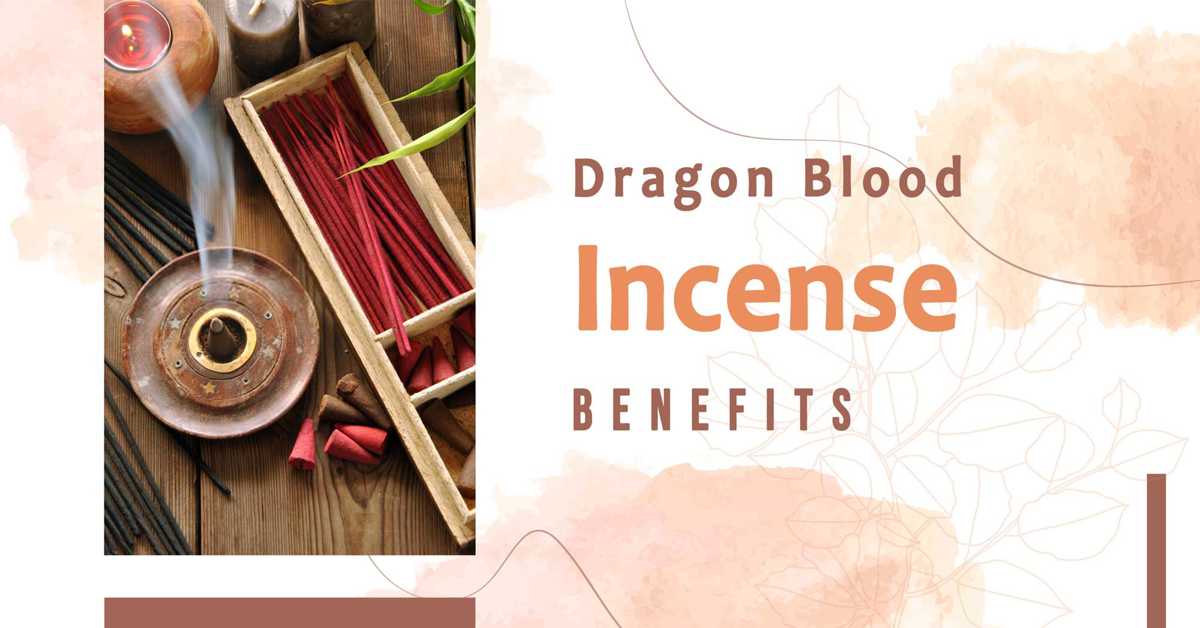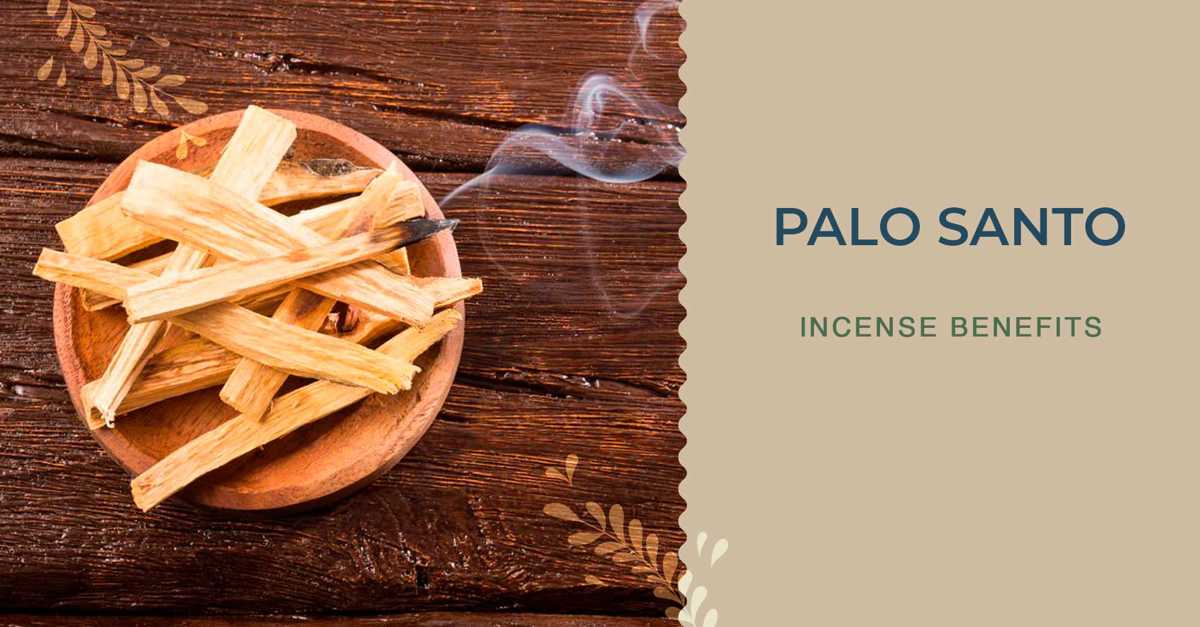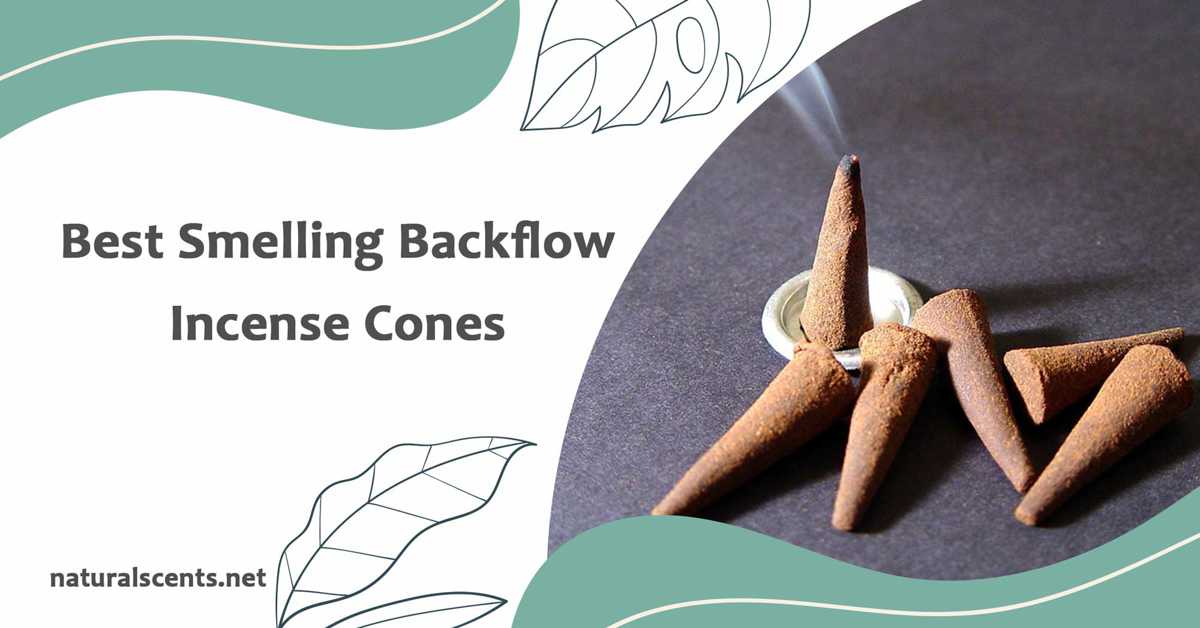When it comes to choosing the right type of incense for relaxation, sandalwood is often a top choice. This wood is enjoyed by many for its earthy and calming scent. Besides, it has a long history of use in religious ceremonies and spiritual practices.
Sandalwood incense is known for its many benefits. It has a sweet, woodsy, and earthy scent that can promote a sense of peace and calm. It's been used for centuries in religious ceremonies and can be helpful in promoting relaxation and focus. Additionally, this type of incense can help to purify the air and create a positive aura. If you're looking for an all-natural way to improve your mood or achieve focus, this may be the perfect option for you.
In this blog post, we will explore the scientific evidence behind the benefits of sandalwood incense and discuss how you can incorporate it into your own life.
Affiliate link disclosures
1. What is sandalwood incense?
When it comes to incense, few scents are as iconic as sandalwood incense. This type of incense has been used for centuries in religious ceremonies and for its purported therapeutic benefits.
It's a type of incense that is made from the Santalum album, a fragrant tree that is found in India, Australia, and Sri Lanka. However, there is one thing that most people don't know is that the scent of sandalwood doesn't come from the wood itself—it's actually extracted from the tree's sap. The oil from the sandalwood tree has a woodsy smell and is used to make aromatherapy products. Today, these incense sticks are made from the sap of the sandalwood tree, which is native to South and Southeast Asia.
There are many different types of sandalwood incense, and each type has its own unique scent and benefits. The most popular are incense sticks. These have the advantage of being easy to use and maintain, but because it contains Makko powder for binding purposes, the aroma is reduced. Another pure form is sandalwood powder. It is suitable when you want to create a pure scent or want to make your own sandalwood incense. Besides, this type of incense also appears in the form of incense cones and coiled incense.
Sandalwood is a popular and valuable commodity, which has led to its imitation or mixed with impurities. Please refer to the article on how to identify real sandalwood incense for more details.
2. What does sandalwood incense smell like?
Have you ever tried sandalwood incense? Sandalwood is a popular scent for incense, there are many different varieties available, and each has its own unique smell and benefits.
Sandalwood incense has a warm and woody aroma that is both grounding and calming. The smell of it is reminiscent of the outdoors, with hints of sweet smokiness and earthy tones. Its aroma can be described as a combination of sweet musk, woody undertones, and subtle spice. Some say it smells like vanilla, others say it has a sweet, woody smell like pine, while others find it calming and relaxing.
3. Benefits of sandalwood incense
3.1. Sandalwood has been used in beauty and cosmetics for centuries
Sandalwood essential oil is also naturally antiseptic and anti-inflammatory, which makes it ideal for use in healing and calming skin conditions like acne or dermatitis. Sandalwood has also been used as a natural antiseptic to protect against infectious bacteria and viruses and improve skin health.
Additionally, sandalwood essential oil is packed with antioxidants that can neutralize free radicals and protect the skin from damage caused by UV rays or environmental pollutants. Furthermore, sandalwood has astringent properties that can tone and tighten pores as well as reduce excessive sebum production on the face – making it an excellent choice for those looking to improve their complexion without chemical treatments!
3.2. Sandalwood incense is believed to help create a romantic atmosphere
For centuries, sandalwood has been revered for its ability to increase feelings of passion, sensuality, and romance. Its strong yet calming scent is thought to stimulate the senses and enhance pleasure. The essential oil from sandalwood is believed to have aphrodisiac properties which can evoke feelings of love and desire.
Studies have suggested that the aromatic compounds found in sandalwood act as a stimulant on the brain, releasing hormones associated with sexual arousal. In traditional Chinese medicine, Sandalwood has been used to treat various ailments including impotence, and low libido. It’s even said that Cleopatra used to bathe in rose-infused sandalwood water prior to her romantic encounters! For these reasons, sandalwood has been a popular choice among lovers throughout the ages as an alluring.
3.3. Sandalwood incense is considered a sedative to help sleep better
Sandalwood essential oils contain santalol, a compound that provides the oil with its distinctive fragrance and is considered to be a natural sedative. This compound can help reduce stress levels and promote feelings of drowsiness. As well as having calming aromatherapy benefits, sandalwood incense is purported to have medicinal properties that may aid in conditions such as anxiety and insomnia. People often use it as an effective remedy for better sleep, helping them drift off into a deep and peaceful slumber.
Whether you're struggling with anxiety or insomnia, or just need a break from the hustle and bustle of everyday life, light up some sandalwood incense and take a deep breath. You'll be surprised at how quickly your mind and body start to feel more relaxed.
3.4. Sandalwood has been used extensively in Ayurvedic medicine for centuries
It is believed to have anti-inflammatory, antibacterial, and antifungal properties that can help treat a wide variety of illnesses and conditions. In India, sandalwood is frequently used as a paste or oil applied directly to the skin to treat acne, eczema, rashes, insect bites, and other skin ailments.
Sandalwood can also be taken internally through teas or tinctures to aid in digestion, reduce inflammation, and calm nerves. The scent of sandalwood is said to help reduce stress and increase the clarity of thought, making it a popular choice for meditation practice.
Bathing with sandalwood essential oil is a wonderful way to soothe and rejuvenate the skin, as well as help treats dry, cracked skin. The natural antiseptic properties of sandalwood can also help reduce bronchitis and nasal congestion, making it an ideal choice for those who suffer from respiratory issues.
Studies have also demonstrated its efficacy in fighting infection and reducing tumor growth. Sandalwood is a valuable and versatile remedy in the Ayurvedic arsenal, worth considering for many of our modern ailments.
3.5. Sandalwood aroma is often used to help reduce stress, irritability, and anxiety
Sandalwood aroma is often used in combination with bergamot or lavender incense to help relieve stress. Its calming nature has been known to provide comfort and solace during times of emotional distress. Studies have shown that sandalwood can help reduce cortisol levels in the bloodstream, a hormone linked to stress.
Additionally, many people use this aromatic oil as an aid for relaxation by diffusing it into their environment or applying it topically. Sandalwood aromatherapy is believed to be effective in promoting mental clarity and improving moods, making it an excellent choice when looking for natural ways to manage feelings of stress and irritability.
4. The spiritual meaning of sandalwood incense
4.1. Sandalwood helps balance the chakras in the human body
Sandalwood has been used for centuries in various spiritual practices, including yoga and meditation, to stimulate the energy centers of the human body known as chakras. The essential oils from sandalwood have a variety of benefits that can positively affect the physical, emotional and mental states of those who use it. Sandalwood oil is believed to be able to help balance all seven major chakras in the body, allowing them to function optimally.
The aroma of sandalwood oil is said to help relax and clear the mind, calming any worries or anxieties held within our physical and energetic bodies. This helps create an environment that allows us to stay more fully connected with our inner selves while still being open enough to receive outside wisdom. When the chakras are in balance, it allows us to access our heart-centered awareness and stay connected with our intuition or higher knowing.
4.2. Sandalwood incense helps align the physical body with the spiritual world
Sandalwood incense has been used ceremoniously in spiritual and religious practices for centuries. The wood has a unique, calming aroma that is thought to invoke feelings of peace and serenity. In many cultures around the world, sandalwood is used to create sacred spaces or places for meditation or prayer, providing an atmosphere conducive to inner reflection and contemplation.
The smoke from the burning incense is said to help connect people with the spiritual realm. The woody, sweet scent of sandalwood is thought to be grounding and blissful, making it the perfect scent for meditation and prayer. If you're looking to add a touch of spirituality to your life, consider using sandalwood incense during your next ceremony.
4.3. Improve mental clarity and focus
It is also said that the smoke of sandalwood can help purify one's inner self, giving them clarity and strength when faced with difficult choices or decisions.
It's believed to help quiet the mind and allow you to better focus on the tasks at hand. Whether you're trying to get through a big project at work or study for an important exam, burning a few sticks of sandalwood incense can help you stay calm and focused. Give it a try the next time you need a mental boost!
4.4. Burning sandalwood incense is said to ward off evil spirits.
The smoke from sandalwood has been used for centuries to ward off evil spirits, protect oneself from curses, and even influence luck. Burning sandalwood incense produces a fragrant scent that can help purify the air, bring tranquility and peace of mind, and provide protection against dark forces.
The ancient Vedic texts teach that burning sandalwood incense affords great powers, such as the power to heal physical ailments and diseases, bless marriages, and increase prosperity.
Moreover, it is said that inhaling its scent invites divine presence, helps in gaining spiritual insights, and brings about a sense of peace.
5. Use
5.1. Bathing with sandalwood for cleansing your aura and unfortunate misfortunes
Bathing with sandalwood essential oil is an ancient practice that is known to have many benefits. It can help to cleanse and clear negative energy from the body, resulting in a calmer and more relaxed feeling of well-being.
To bathe with sandalwood essential oil, you should add a few drops of the oil into your bathwater, allowing it to disperse throughout the water and be absorbed through the skin as you soak. You may also want to add some Epsom salt or sea salt for additional cleansing power.
Breathe deeply as you relax in your bath, visualizing any negative energies departing from your body and being replaced by positive ones. Afterward, rinse off with cool water to seal in the effects of this revitalizing treatment. Make sure to follow up with a moisturizer or oil to protect your skin and keep it hydrated throughout the day. This simple ritual of cleansing can be very powerful in restoring inner balance and harmony, leaving you feeling refreshed and renewed.
5.2. Wearing a sandalwood bracelet is believed to bring luck and prosperity in life and work
This fragrant wood has been used for centuries in religious ceremonies, spiritual practices, and traditional medicine throughout Asia. It's said that wearing sandalwood bracelets made from chips of wood can attract positive energies and aid concentration, increasing one’s chances of success in business ventures.
Sandalwood is believed to emit powerful energies which can attract positive influences into one's life, aiding them in achieving their goals.
Whether you choose to wear a sandalwood bracelet for its spiritual benefits or simply as a fashionable accessory, you may find that it brings you closer to your inner peace and contentment.
Wearing a Sandalwood mala necklace or bracelet while meditating further helps bring about strength, focus, and harmony within oneself. Alternatively, if you don't wish to wear a Sandalwood mala, simply placing it in front of you while meditating can help bring about the same calming effects.
5.3. Diffusing sandalwood oil can help one reach a deeper state of meditation
Sandalwood essential oil is a popular choice for people who practice yoga or meditate. This type of oil has a calming, soothing aroma that can help to promote relaxation and inner peace. Its earthy scent can also reduce stress and anxiety levels, making it perfect for helping to achieve greater mental clarity when practicing yoga and meditation.
Its aroma has been used throughout history by yogis and meditators as part of their practice, allowing them to find clarity and reach higher states of consciousness. Not only does sandalwood essential oil create an atmosphere conducive to relaxation, but it may also stimulate the heart chakra, enhancing spiritual connection. When inhaling this sacred fragrance, the vibration increases and meditation becomes easier. Adding this oil to your aromatherapy practice can enhance your meditative experience and lead you toward finding inner peace.
5.4. Burning sandalwood incense helps dispel negative energy in the home or workplace
Burning sandalwood incense is an age-old practice used to purify and cleanse the air. In many cultures, burning sandalwood incense was believed to help clear negative energy from a space, leaving it feeling peaceful and serene. The smoke of sandalwood carries healing properties that can uplift the mood of a room or workplace and even restore balance in chaotic environments.
Alternatively, you can burn a combination of sandalwood and sage powders on hot coals to effectively clear away negative energy from your home. To maximize the effect of this ritual, it is recommended to do so during the full moon days of each month.
6. Side effects
Incense has been enjoyed by people for centuries, and there are many different types to choose from. Sandalwood incense is a popular choice, but it's important to be aware of the potential side effects before you start burning it. Although rare, some people can have an allergic reaction to the oil in sandalwood, and others may find that it makes them feel lightheaded or dizzy. So if you're thinking of giving it a try, make sure to do so in a safe and responsible manner.
7. Where to buy
Looking for a place to buy high-quality sandalwood incense? Look no further than your local store! Here, you'll be able to find incense in a variety of styles, colors, and scents. Plus, the staff is always available to help you choose the perfect product for your needs. So whether you're looking for a gift or just want to stock up on your favorite scent, be sure to check out your local store's selection of sandalwood incense!
However, this is not always possible, and online shopping sites like Amazon or Etsy are also ideal places to buy this incense. While there are many brands of sandalwood incense available, not all of them are created equal. Besides, this type of incense is also very easy to fake or mix with cheap materials.
When ordering online, there are a few things to keep in mind. First, look for incense that is made with 100% pure sandalwood oil. Second, make sure the company uses sustainable harvesting practices. Finally, check the price to ensure it's fair.
Check out our guide for detailed instructions on how to tell if your incense is real sandalwood or not.
Besides, you can also read our top 11 best sandalwood products to choose for yourself the most suitable product. Here are some of the best brands to consider when looking for quality sandalwood incense.
Related articles
Show moreSource
1. Functional characterization of an Indian sandalwood (Santalum album L.) dual-localized bifunctional nerolidol/linalool synthase gene involved in stress response
https://www.sciencedirect.com/science/article/abs/pii/S0031942220312255
2. Medicinal properties of alpha-santalol, a naturally occurring constituent of sandalwood oil: review
https://www.sciencedirect.com/org/science/article/abs/pii/S1478641922017983
3. Incense of Sandalwood – HardPress
https://books.google.com/books/about/Incense_of_Sandalwood.html?hl=vi&id=M8YonwEACAAJ
4. Indian Sandalwood: A Compendium
https://books.google.com/books/about/Indian_Sandalwood.html?hl=vi&id=ydFYEAAAQBAJ













